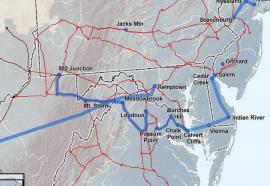Law & Lawyers
Middle Mile Moxie
Xcel Energy proposes to create America’s first fully functional intelligent grid, with communications and automation systems linking the network from end to end, power plants to meters. Although Xcel still is deploying the system, it’s shown that the early payoff from smart-grid investments won’t necessarily come from automated metering, but from automation in the distribution network—the “middle mile.” As chief architect of the Smart Grid City project in Boulder, Colo., Ray Gogel served on the front lines in the industry’s technology revolution.
New York Negawatts
Balancing risks and opportunities in efficiency investments.
In June 2008, the New York Public Service Commission (PSC) established the electric energy-efficiency portfolio standards for New York’s investor-owned utilities. In its order, the PSC directed utilities to file three-year energy-efficiency plans. Later that year, the PSC issued a supplemental order approving shareholder incentives for utilities successfully implementing their portfolios. If all goes according to plan, the six affected IOUs stand to earn about $27 million annually in performance incentives over three years. The structure of the incentive mechanism approved by the PSC presents risk factors that might affect utilities’ ability to realize the full earning potentials the mechanism offers.
Wellinghoff's War
FERC fights for the green-grid superhighway—even if Congress won’t.
The Senate’s deadlock over carbon cap-and-trade legislation has not deterred FERC Chairman Jon Wellinghoff from an agenda bent on promoting renewable energy and fighting climate change. Last fall, even as Congress dithered, FERC launched a landmark initiative that likely will lead to sweeping new rules for expanding the nation’s electric transmission grid, grounded on Wellinghoff’s belief in wind, solar, and green power resources.
LMP Works!
Locational marginal prices in PJM respond to demand and fuel costs.
The evolution of real-time locational marginal prices (LMP) in PJM Interconnection’s wholesale electricity markets demonstrates the characteristics of a well functioning and competitive market; prices are driven by supply and demand fundamentals. Although critics of wholesale electricity markets frequently have pointed to increases in LMP as proof that the wholesale markets aren’t working, in reality, the markets are working as they should. Increases in LMP are driven by higher demand for electricity or increasing fuel prices.
Not So Fast
Proving market performance requires detailed analysis.
Now that fuel prices have fallen recently from the highs seen in 2008 and wholesale electricity prices also have decreased, it might be tempting to attribute the lower prices to the restructuring of the wholesale electricity markets. Unfortunately, it’s a little more complicated than that.
Rethinking Prices
The changing architecture of demand response in America.
Pilot projects are demonstrating the potential of smart metering and smart rates to make the most of supply and demand resources. But as empirical studies show, not all pricing designs are equally suited to every region.
Tomorrow's T&D
The most economical energy savings might be found in grid efficiency.
Power delivery efficiency gains constitute a valuable utility asset that can offset or defer new generation and T&D investments. Enabling technologies, utility demonstration projects and supporting regulatory frameworks are needed to validate potential savings.
Smart Grid Consensus
Workable standards require utility input.
The IEEE P2030 Work Group is developing standards to encourage seamless deployment, integration and operation of energy, information and communication technologies across the smart grid. Utility input and engagement is needed to produce workable standards.
Engaging Customers
Look to other industries for lessons on marketing services.
To get the most from smart-grid investments, utilities need to target customers most likely to participate in smart-grid programs. The new business case requires a new marketing strategy—and a new level of regulatory scrutiny.







